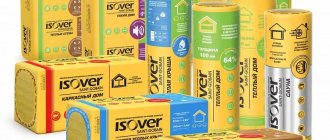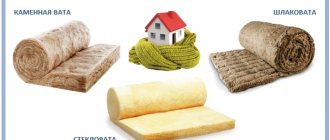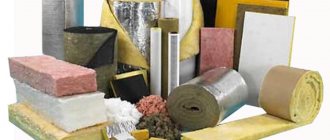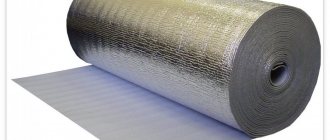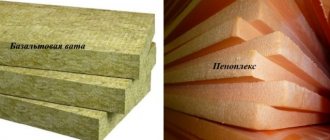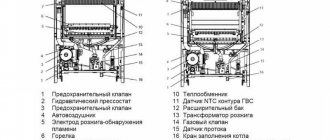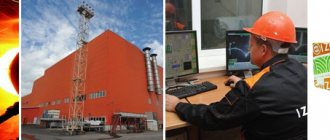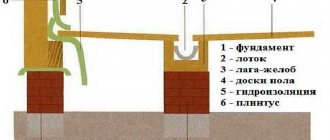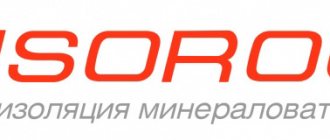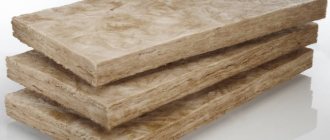Creating comfortable conditions in a house begins from the moment of its construction. First of all, it is important to protect your home from the cold and all kinds of extraneous noise. Over the years, fireplaces and electric heaters of various modifications have been used for heating purposes.
Today, mineral wool is used for high-quality insulation of premises. The properties and characteristics of mineral wool may vary depending on its type. Therefore, when choosing, it is very important to know which parameters determine the quality of a given material.
What is this material?
Mineral wool is an artificially produced insulation material in the form of slabs or rolls of different thicknesses. It belongs to the main elements of thermal insulation structures. Nowadays, due to its low thermal conductivity and its characteristics, mineral wool is widely used for the construction of residential and commercial buildings. Most often it is used to insulate walls, roofs and ceilings.
What does mineral wool consist of?
Many say that mineral wool causes serious harm to health. How true this statement is can only be said after studying the composition of the basalt-based material. It consists of several components:
- bases - fibers obtained by melting rocks;
- binder resins capable of forming the required shape of the material - roll or slab;
- impregnations that make mineral wool impervious to external influences.
Glass wool, which is based on a mixture of broken glass, limestone, and quartz glass, also belongs to the category of mineral wool. The mixture is melted and inflated with steam to obtain the finest air threads, allowing the insulation to recover after compression.
The material has a number of advantages that make it one of the industry leaders, namely:
- low thermal conductivity - from 0.035 to 0.042 W/mK;
- reduced moisture saturation coefficient (up to 1%);
- no shrinkage during long-term use;
- durability.
The stone base is environmentally friendly and does not have any harmful effects on the human body. Basalt, most often used in the manufacture of insulation, is even used in the medical field, which indicates its safety. Resins and impregnations, if the manufacturing and installation technology is not followed, can negatively affect health, but how serious will this impact be?
How does mineral wool affect the health of household members and insulation workers?
Classification of mineral wool by type
Depending on the needs and purpose, it is necessary to pay attention not only to the thickness and dimensions of the material, but also to its properties. According to GOST 52953-2008, mineral wool comes in several types, which are classified as:
- fiberglass (glass wool);
- slag fiber (slag wool);
- stone fiber (stone wool).
Each type of mineral wool differs in the thickness and length of the fibers, has a different level of load resistance, thermal conductivity, moisture resistance and resistance to heat (high temperature). At the same time, in particular, working with glass wool causes certain difficulties and inconveniences; it should be used while observing safety precautions.
Therefore, when choosing, it is very important to pay attention to each of these parameters and purchase the type of mineral wool that is most suitable for the work being performed. You can find out more about the characteristics of each type below.
Fiberglass
This type of material is very strong and elastic precisely due to the size of the fibers, the thickness of which is 5-15 microns, length - 15-50 mm. In addition to its good thermal insulation characteristics, glass wool has significant disadvantages. Various pests (rodents, insects, etc.) get along well in it. And also, when laying it, there is a danger to human health.
It is necessary to work with it extremely carefully, wearing gloves, goggles and a respirator. Glass fibers can penetrate the skin, get into the eyes and lungs, thereby injuring organs.
Fiberglass Specifications:
- fiber thickness - 5-15 microns;
- fiber length - 15-50 mm;
- coefficient thermal conductivity – 0.03-0.052 Watt/m/Kelvin;
- max heating temperature – 500 C;
- max cooling t – (-)60 C.
Slag fiber
Industrial waste – blast furnace slag – is used to produce slag wool. When insulating a room, it should be remembered that they have high residual acidity, so condensation, dampness and moisture in the room will contribute to the negative impact of slag on the metal surface and structures.
The properties of such heat-insulating fiber include significant absorption of moisture; therefore, it is not recommended to use it for cladding the facades of construction sites and water pipes. It has increased fragility and is sharp to the touch, so it is necessary to work with it with gloves.
Existing brands of mineral wool
Depending on the type and brand of material, mineral wool will have different densities. This allows the consumer to make a wider choice of insulation, which is necessary for a particular room. Stone wool is often used in the construction industry. Based on this, we can highlight the most famous brands of basalt mineral wool.
Brand P-75. The material has a density of 75 kg kg/m3. Intended for cladding horizontal surfaces that are not subject to significant loads. That is, they are well suited for roofing and attic spaces. In addition, to preserve heat, it is used to wrap pipes.
Brand P-125. Material density - 125 kg/m3. Designed for frame insulation: floor, ceiling, internal walls, partitions. In some cases it is used as an inner layer of walls. P-75 has good soundproofing properties. Therefore, this brand of mineral wool will cope perfectly with the joint task of insulation and sound insulation.
Brand PZh-175. The peculiarity of this type of mineral wool is its increased rigidity. Most often used for insulation of industrial and commercial facilities. It has proven itself well as a heat insulator in rooms with reinforced concrete and metal walls.
Brand PPZh-200. Ultra-hard material, resistant to heavy loads, which is why it is used in industry. Its characteristics are not very different from PZh-175, but it has fire-fighting properties.
Advantages and disadvantages
Thanks to its qualities, mineral wool can withstand worthy competition in the insulation market. The advantages of this type of insulation include:
- Climatic conditions are not a hindrance for it, so installation can be carried out everywhere. No additional means for insulation are required.
- Using mineral wool, you can forget about such a thing as dampness. Mineral wool, as insulation, when properly processed does not collect moisture and also does not let in steam, so conditions for the formation of dampness are excluded.
- Such material does not interfere with air circulation in the room, and even vice versa - there is no need to use devices for air ventilation.
- Mineral insulation does not interact with acids and alkalis, so there is no need to worry about compromising the strength of structures (laboratories are often lined with this material).
- Has very good sound insulation. If you use it to insulate an apartment or house, sounds from the street will not disturb you.
- As already noted, mineral wool does not burn, and when interacting with fire it does not emit any harmful substances into the atmosphere.
- Long service life of the material. Insulating buildings and pipelines with mineral wool is also beneficial from an economic point of view, due to the durability of the material. Such insulation not only burns poorly or absorbs moisture, but it is also not damaged by rodents and microorganisms. In addition, over time it does not lose its shape and does not “shrink”.
- Easy installation. Even an amateur builder can insulate a room using mineral wool.
- Environmentally friendly material that does not cause any allergic reactions in people indoors.
Insulation and soundproofing of a house with Izoplat
If earlier a whole list of shortcomings could be given, today many manufacturers have eliminated most of them in their products. But some problems still remain:
- Dust harmful to health - this applies to glass wool, work with which must be carried out in special clothing and with the help of protective equipment. A damaged part of mineral wool can easily cause injury. Moreover, damaged fibers of the material can adversely affect the respiratory tract. Avoiding this is quite simple - when installing mineral wool, it is enough to wear a protective suit, goggles, a respirator and gloves.
- When heated, such material can release a dangerous toxin - phenol (arises as a result of the oxidation of formaldehyde resin, which is part of the cotton wool). Some manufacturers claim that their amount of formaldehyde resins is so small that they cannot cause harm to the human body. In any case, it is not worth the risk, and installation must be carried out while observing safety precautions.
- There is a problem of deterioration of thermal conductivity properties as a result of the interaction of insulation with water. Manufacturers are working to solve this problem by adding special hydrophobic compounds to their products. Additionally, during installation it is necessary to apply waterproofing.
Advantages and disadvantages of the material
Like any other material, mineral wool has its positive and negative sides. Among the obvious advantages of using this material are:
- excellent hydrophobic properties;
- ease of use, installation and dismantling;
- has fire safety;
- has a high density;
- vapor permeable;
- insignificant load on the main structural elements (walls, ceiling);
- compact and convenient;
- depending on the brand, it is slightly susceptible to damage by rodents and insects;
- has long-term performance characteristics;
- holds its shape and volume well.
The disadvantages of mineral wool include its high cost, compared to a number of other thermal insulation materials, as well as harm to human health if used incorrectly. Basically, a health threat arises at the time of installation of the material itself, since particles of glass, slag and basalt dust can settle on the lungs.
Once construction is completed, the risk of inhaling these substances is reduced to almost zero. But in the case of using stone wool, there is a possibility of formaldehyde resins evaporating in the room, especially if the air temperature is above 25-30C. To avoid this, it is necessary to use a vapor-proof polyvinyl chloride film, covering it over the entire surface of the insulation.
For complete safety, it is best to try to use basalt mineral wool. The main thing is to purchase quality products from reliable manufacturers, then all risks and health hazards will be minimized.
What to look for when choosing mineral wool?
First of all, it is necessary to clarify for what area this insulation will be used and only on the basis of this should it be selected. This is due to the fact that mineral wool, which is intended for insulating internal walls and facades, does not need to be used to insulate the floors or roof of the structure. At the same time, the increased density of the insulation is a guarantee that over time the heat insulator will not lose its properties.
When choosing, follow these recommendations:
- Find out how the fibers of a particular material are arranged. Their vertical arrangement in mineral wool means better thermal stability. The chaotic arrangement means high strength, thanks to which the insulation can be used for heavy loads.
- Consider the upcoming loads to which the surface with mineral wool will be exposed. If the mechanical pressure is high, then buy slabs with the highest density. This way, you will avoid compaction of the material and, consequently, a decrease in thermal insulation qualities.
- To insulate the roof from the inside, you should select brands of foil-coated mineral wool. Thus, heat loss from sunlight will be minimal.
- An important indicator is thermal conductivity. It should definitely be taken into account when choosing. In addition, it is important to remember that depending on the ambient temperature, its indicators will change.
The most famous manufacturers of mineral wool include: “URSA”, “ISOVER”, “PAROC”, “Rockwool”. German mineral wool is considered the best insulation material on the market. The price of mineral wool depends on its characteristics and density. For example, the price of URSA mineral wool ranges from 1-1.3 thousand rubles per 1 cubic meter. High-quality basalt products are more expensive than slag and glass wool.
Technical Specifications - Fiberglass Properties
According to the manufacturing technology described above, the output is fiberglass, which has the following properties:
- Thermal conductivity. The indicator ranges from 0.034-0.04W/(m*K). It shows how much heat can pass through the insulation at a certain temperature difference.
- Density. The indicator shows the total amount of glass fiber per cubic meter of wool. The average density level is 11-14 kg/m3, which depends on the type of packaging and the area of destination of the material.
- Dimensions, shape, thickness. Depending on the purpose of mineral wool, it can be produced in various shapes, sizes and thicknesses. The slabs are usually produced with a thickness of 20-200 mm, with a size of 600 * 1000 cm, which ensures convenient transportation and installation. Mats are produced with a width of 600-1200 mm, a thickness of 50-150 mm and a length of up to 9 m. Min. insulation in the form of cylinders - up to 1 m long, with diameters from 2 to 27 cm.
- Noise insulation. The chaotic arrangement of the fiber structure provides not only a high level of thermal protection, but also excellent noise insulation. Some manufacturers even produce hotel series that are specifically designed to absorb even sound vibrations, which makes it popular for insulating ventilation ducts and industrial equipment. Information is usually indicated on the packaging and in the product description, indicating this ability with an indicator - Aw, where the indicator 0 indicates the ability to reflect waves, 1 - the ability to absorb them.
- Vapor permeability. Mineral wool has excellent vapor permeability equal to 0.48 g/(m*h*hPa). The special fibrous structure allows steam to leak through without being absorbed or accumulated. This feature is used to protect structural elements from moisture.
To ensure good heat exchange between the insulation and the environment, manufacturers recommend using a special membrane vapor barrier, which will help extend the life of the insulation without getting wet from condensation.
- Flammability. Flammability degree - NG (Non-combustible materials). This is the most important advantage of cotton wool, because... it can withstand operating temperatures up to +700°C and is not capable of supporting a fire. When heated, toxic and harmful substances are not released, which makes the material safe.
The flammability class is indicated on the packaging of the insulation: A1 – shows a high fire safety class; S1 – smoke-forming ability (mineral wool practically does not emit smoke when burning); D0 – the material does not crack under strong heat.
